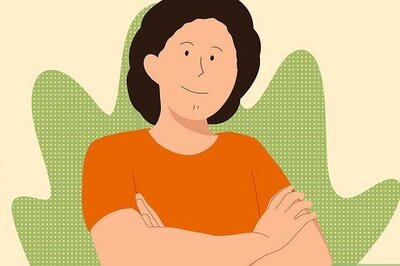
views

The practice of infusing herbs and fruits into alcohol is no modern fashion. Ancient Egyptians did it; they put medicinal herbs in their wine, drank it and waited to see what magic the drink could work up in their fatigued bodies. Come to the Middle Ages. The array of herbal bitters and medicinal tonics steeped in distilled wines would mark the shelves of the 'physicians' of the time (today we call them bitters).
By 1806, American publications were raving about a new concoction called cocktail, which is alcohol mixed with sugar, fruits, water, and bitters - the herbs. If only they knew that the tradition harked back to the Ancient Egyptians! What caught their fancy was the sudden popularity of a new drink named the Angostura bitters.
Despite, its name the aromatic bitters doesn't contain the bark of an Angostura tree, a medicinal plant native to South America.
Before we dip into the bitters, let's see where Angostura came from.
Nineteenth-century. It was the time when anyone who had a brush with distillation was experimenting with his drink. People threw random things that came their way into the boiling cauldron to make the alcohol more potent, more beneficial to human health. From the clatter of claims about the salutary qualities of bitters, one voice stood apart, that of the German physician Dr Johann Gottlieb Benjamin Siegert, who had settled in the town of Angostura, Venezuela (hence the name).
It was the year 1824 and this man had a magic cure for stomach maladies and sea-sickness. Could he ever walk the talk, prove his claim, and did the world listen?
His first customers had to. Since Siegert was the surgeon general for the military-led by Simon Bolivar, the soldiers had to take the regular tonic of Dr Siegert's Aromatic Bitters for long voyages across the blue waters.
After Siegert's death, his sons moved the family business out of Venezuela to a new country - Trinidad. Sales sky-rocketed when the brothers enthusiastically campaigned for the treasure their father had bequeathed them with.
But in the mad rush to take their company to new heights they set up business in the new land. One brother was assigned with the design of a bottle, while another had to work with the label. By the time they came together and measured their works against each other, the brothers found that the label was too large for the bottle and that it stuck out like a sore thumb. It was too late to start all over. A friend asked them why they didn't keep this as their signature. The brothers did exactly that. So don't get curious about the oversized label you see on a bottle of Angostura Bitters today.
The golden age of cocktails began close on the heels of American prohibition, at the beginning of the last century. When life got bleak with the disappearance of spirits from public life, drinkers had to quench their thirst with whatever drab and spurious liquor they had found through nefarious ways. Many tasted like sewer water. It was time for Angostura Bitters to assume its next avatar. To mute the nasty taste of the boot-legged spirit, people were ready to put anything into it. Angostura Bitters was more than they could have asked for. The popularity of the drink once again soared.
So what goes into the Bitters?
When Siegert started making the bitters at the beginning of the nineteenth century he used local plants found in Venezuela. Today the company uses around forty different herbs. Sorry, you are denied access beyond that door. It is believed that only five people on the planet know its secret formula in the present time. The ingredients are collected from various parts of the world and flown into England where they are discretely assorted and bagged. The bags would then be shipped to Trinidad, where, because of a longstanding agreement between the Government and the Siegert family, they slip quietly through customs. Once they reach the distillery, the 'manufacturers,' the five-member team welcome them to a room named the Sanctuary. The magic begins there.
What comes out of the ingredients is the most famous bitters in the world, even after two hundred years.




















Comments
0 comment